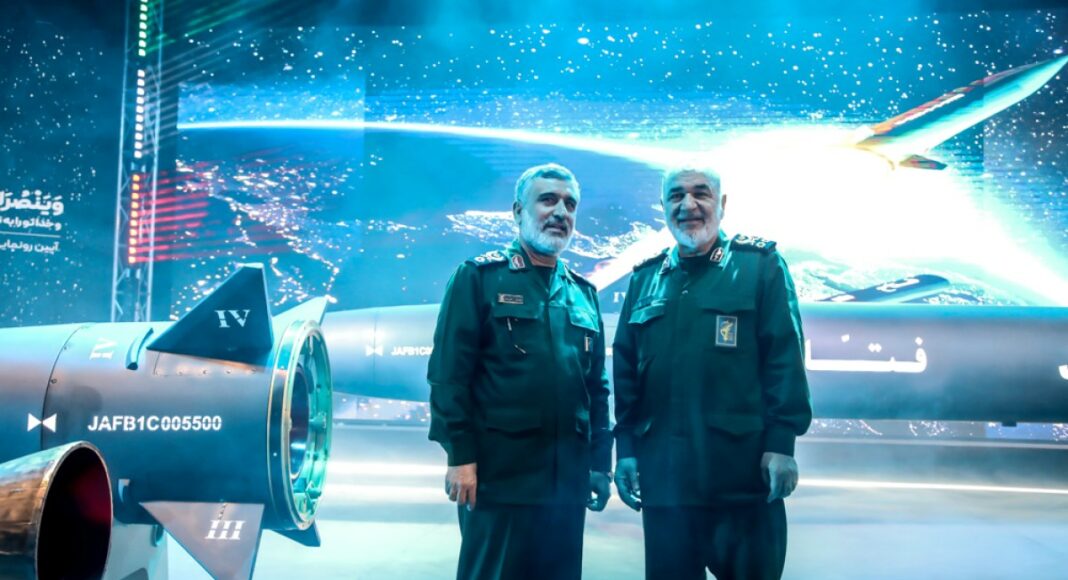Tehran, Iran – A number of restrictions imposed by the United Nations Security Council on Iran’s missile programme were lifted on Wednesday as part of the country’s 2015 nuclear deal with world powers.
But on the same day, the United States slapped new sanctions targeting Tehran’s missile programme while the European Union last month decided to impose restrictive measures under “the EU non-proliferation regime”.
So, what are the restrictions that are being lifted? And what do the continued US and European sanctions mean? What to expect next as Tehran and the Western allies remain on opposing sides of a standoff.
What are the restrictions?
The restrictions, enshrined in UN Resolution 2231 (2015) underpinning the nuclear deal, “call upon Iran not to undertake any activity related to ballistic missiles designed to be capable of delivering nuclear weapons, including launches using such ballistic missile technology”.
Anyone wishing to engage in any related trade deal with Iran would have had to get a green light from the UNSC, and some Iranian indiuals and entities were blacklisted.
As of 18 October 2023, in accordance with UNSCR 2231, all restrictions unjustly imposed on ballistic missile-related activities and transfers to/from the Islamic Republic of Iran terminate; and Iran is no longer subject to any restriction in the context of the #SecurityCouncil.
— علی باقریکنی (@Bagheri_Kani) October 18, 2023
The limitations were introduced due to Western concerns that Iran may want to use its advanced ballistic missile technology to deliver a nuclear warhead, something Tehran has firmly rejected.
Since the restrictions were related to Iran’s nuclear programme, they were included in the nuclear deal, which Iran signed with China, Russia, the US, France, Germany and the United Kingdom.
The nuclear accord, known formally as the Joint Comprehensive Plan of Action (JCPOA), was in essence an agreement for Iran to verifiably limit its nuclear abilities to ensure their peacefulness in exchange for lifting multilateral sanctions.
The deal was working until then-US President Donald Trump withdrew from it in 2018 and imposed the harshest unilateral sanctions that have left no sector of the Iranian economy or military untouched.
One year after that, Iran started going beyond the nuclear limits set by the accord, and years of efforts since have failed to restore the deal, now leaving it in a coma it looks unlikely to come out of.
But as long as the deal is officially alive, its so-called sunset clauses work. As terms of the deal, Tehran’s restrictions on centrifuges and limits on uranium enrichment were for a period of 10 and 15 years, respectively. Critics say the sunset clauses could only delay Tehran building a bomb. Iran has reiterated its nuclear programme is for civilian purposes.
In October 2020, UN sanctions on sales of conventional arms to and from Iran were lifted as part of the nuclear deal, even though the Trump administration insisted that was not the case.
Now, the restrictions on ballistic missiles are out of the picture.
Why doesn’t the West like that?
The Western parties to the JCPOA are still concerned about what Iran could be doing with its missiles in the future.
That is why every time Iran has put a satellite in space using a ballistic missile in the past few years, including after a launch by the Islamic Revolutionary Guard Corps (IRGC) last month, Tehran and the West have traded barbs.
There was no question that Washington would be keeping all its sanctions in place, but the European powers part of the deal, known as the E3, also announced last month they decided to locally enforce all the missile-related restrictions since they say Tehran is breaching the nuclear deal.
But the war in Ukraine also seems to have had a huge impact on their decision.
They maintain that Iran has supplied Russia with a variety of attack and suicide drones that have been used in its invasion of Ukraine.
But it does not stop at drones, since the Western allies believe there is also a chance Iran will supply Russia with missiles for the war.
Tehran says it is in favour of resolving the conflict through talks, and it gave Moscow drones months before the war.
What happens now?
Iran’s Ministry of Foreign Affairs and its Ministry of Defence on Wednesday released separate statements to mark the lifting of the restrictions, that they said were “unjustly imposed” in the first place.
The Defence Ministry said Iran “regards this period in time as an opportunity to be used to prove its might and righteousness, and also to strengthen its defence capabilities” despite the stance of the Western parties.
Russia was quick to praise as well, with its Ministry of Foreign Affairs saying in a statement late on Tuesday it no longer sees itself bound to the UN restrictions that have expired as part of Resolution 2231.
It did not say whether it plans to engage in any cooperation with Iran dealing with ballistic missiles.
For the time being, it looks like the Western parties are reluctant to use the so-called “snapback” mechanism of the nuclear deal, which could theoretically reinstate all UN sanctions on Iran if it is found to be in non-compliance with the nuclear accord.
That door remains open for another two years, when another sunset clause terminates the option.
For now, Iran is maintaining contact with the International Atomic Energy Agency (IAEA) on a number of outstanding cases related to its nuclear programme, with the nuclear watchdog criticising insufficient cooperation and Tehran accusing it of being politically influenced.



